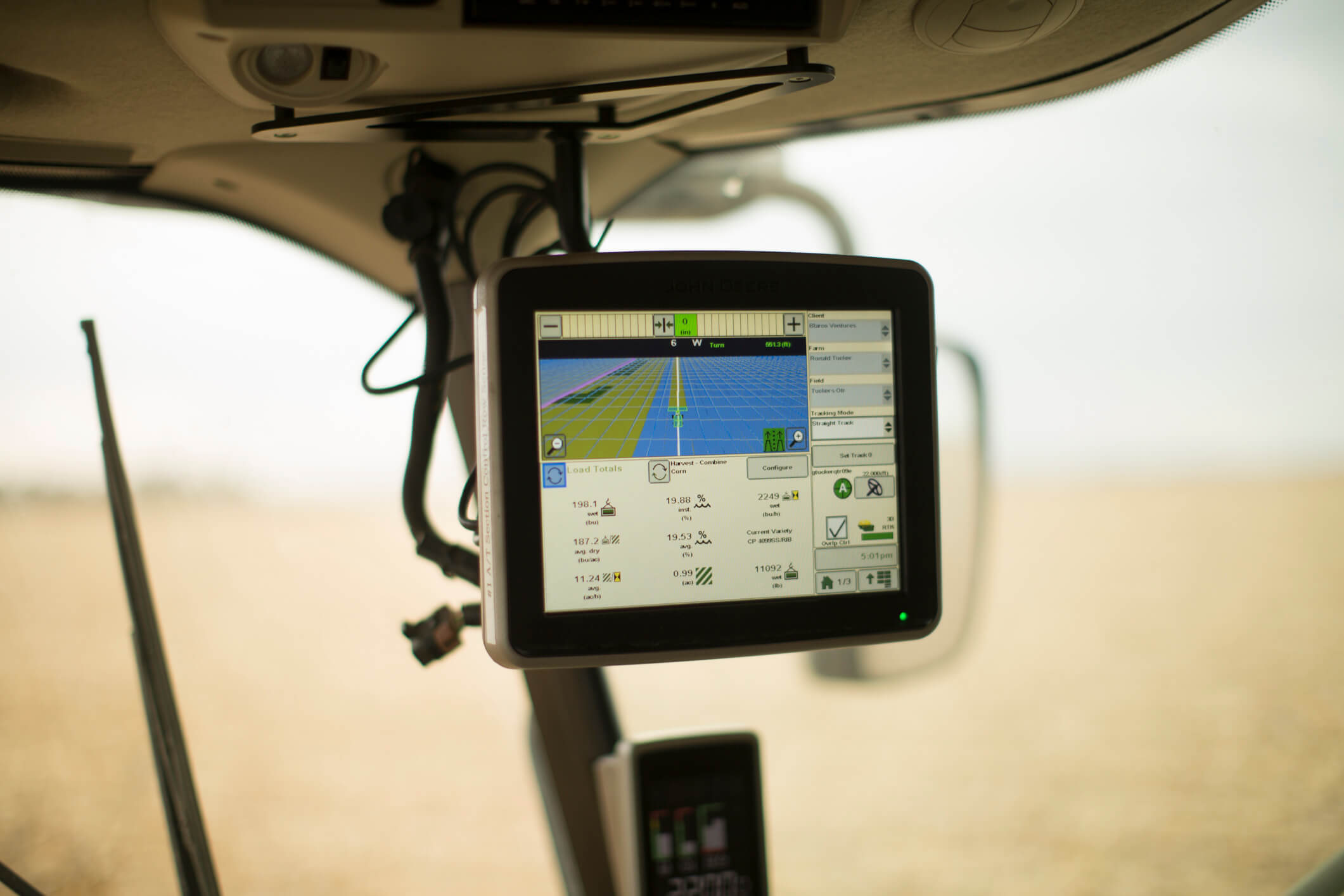Collecting Accurate Yield Data

As you fire up the combine and head into harvest, ensure that you properly calibrate your yield monitor to collect accurate and detailed yield data.
Account for Variability
The old saying, “garbage in equals garbage out,” applies equivalently to yield monitors and data. Poorly calibrated yield monitors can result in higher yields appearing excessive and lower yields appearing understated.
For a calibration that can measure accurate and precise yield fluctuations, use an in-season imagery tool to assess the low-, medium- and high-yielding portions of your field, along with different moisture levels. The larger the calibration load, the more likely you are to reduce variability.
Ensure Scale Consistency
A yield monitor measures yield by calculating the mass flow of grain, grain moisture content, distance, ground speed, and header width and height. A key component of calibration is making sure you are using the same accurate scale to weigh your calibration loads throughout the whole process.
Use a Precise Yield Map
While at the end of the day we can analyze final yields back to scale tickets to see how accurate the yield monitor is, one thing that can’t be readjusted is how precise the yield map is. Accuracy and precision are equally important, but it’s important to know the difference and ensure your equipment and processes are accounting for both.
Ideally, you want a map that is both accurate and has precise spatial variability. There are software tools available that will help you take a precise spatial map and adjust yields to confirm accuracy.
Calibrate and Re-Calibrate
To ensure you get accurate and useful data from your yield monitor throughout the season, you should calibrate frequently and consistently throughout the season.
More tips for collecting accurate yield data are available here.
Account for Variability
The old saying, “garbage in equals garbage out,” applies equivalently to yield monitors and data. Poorly calibrated yield monitors can result in higher yields appearing excessive and lower yields appearing understated.
For a calibration that can measure accurate and precise yield fluctuations, use an in-season imagery tool to assess the low-, medium- and high-yielding portions of your field, along with different moisture levels. The larger the calibration load, the more likely you are to reduce variability.
Ensure Scale Consistency
A yield monitor measures yield by calculating the mass flow of grain, grain moisture content, distance, ground speed, and header width and height. A key component of calibration is making sure you are using the same accurate scale to weigh your calibration loads throughout the whole process.
Use a Precise Yield Map
While at the end of the day we can analyze final yields back to scale tickets to see how accurate the yield monitor is, one thing that can’t be readjusted is how precise the yield map is. Accuracy and precision are equally important, but it’s important to know the difference and ensure your equipment and processes are accounting for both.
- An accurate map will show you the exact total bushels you have harvested from the field.
- A precise map retrieves spatial variability and allows you to pick out different management zones in the field. To retrieve good spatial variability, you have to calibrate your yield monitor for precision more than for accuracy.
Ideally, you want a map that is both accurate and has precise spatial variability. There are software tools available that will help you take a precise spatial map and adjust yields to confirm accuracy.
Calibrate and Re-Calibrate
To ensure you get accurate and useful data from your yield monitor throughout the season, you should calibrate frequently and consistently throughout the season.
- Calibrate after a change in grain intake, differences in harvest conditions, swings in grain moisture levels and significant changes to the machine.
- Become familiar with your operator’s manual for specific calibration instructions and information for inspecting components prior to harvest.
More tips for collecting accurate yield data are available here.

